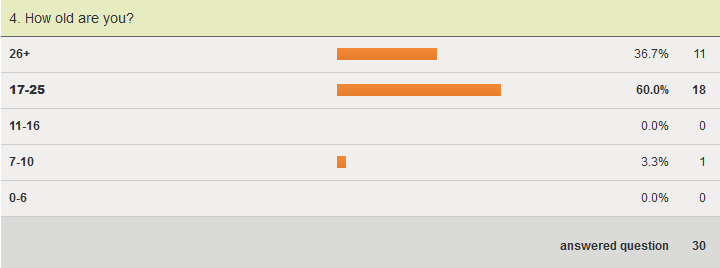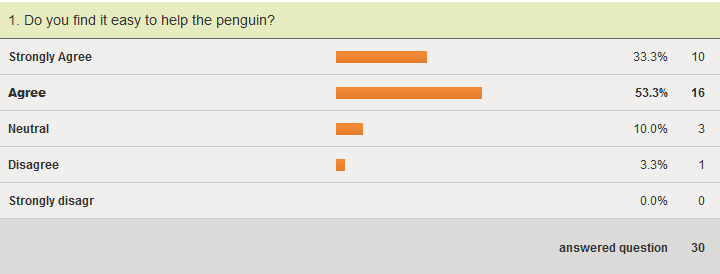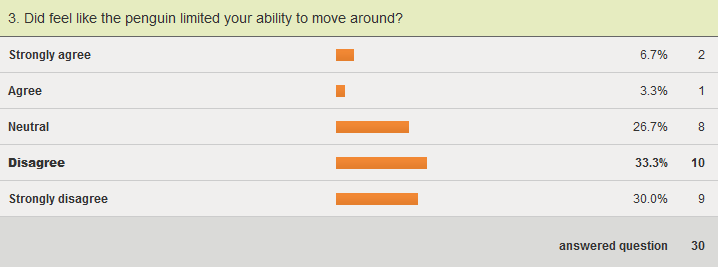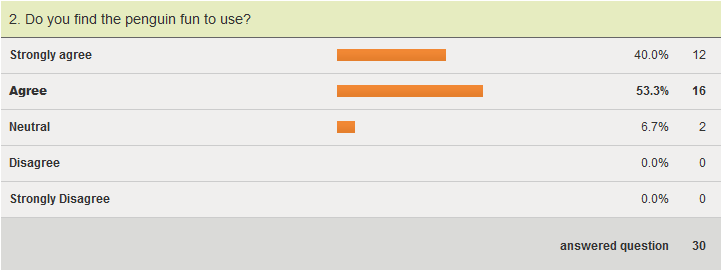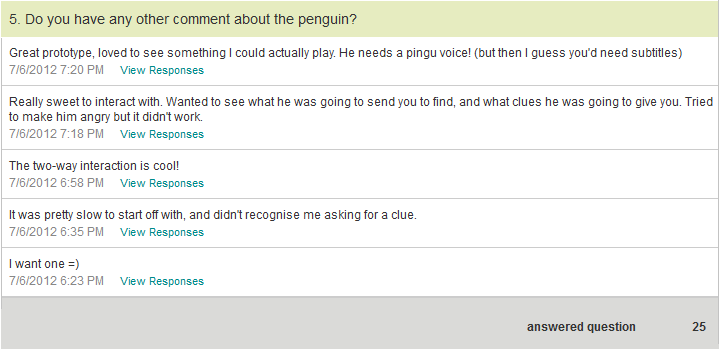After the exhibition ended, we had a last late user testing the device, and the accuracy of the voice recognition during that test was 100%. That being said, we designed the toy to work in reasonably noisy environments, such as a kindergarten. In conclusion, I would say our test point towards that our device works reasonable well for such environments, as 84% of our users gave no negative feedback regarding the voice recognition, and, as stated above, and a similar percentage reported the penguin being easy to use.
Mobility and reverse-phrased questions
My gut feeling about the higher number (10%) of responses agreeing with that the penguin did limit their ability to move around, the opposite of the result we wanted is similar to for what I said regarding how easy the penguin was to use. Towards the end of the evening the space around the user testing the penguing got completely crowded, and it was impossible for our tester to move around very much without bumping into people. On another note, however, we never prompted our users to move around that much. As can be seen in the video, the users only move around in our test booth, which was no larger than a very small room. Our technology however performs perfectly reliable up to a much larger distance, well over 75 meters (~250 feet). A test that would have made participants realise this might have produced more positive responses.
As a final note regarding the mobility question, this question was our only reverse-phrased question. It is possible that this might have confused some participants and caused them to provide the wrong answer, however. A better design would not have placed the reverese-phrased question last, as we now can't expect this possible effect to equally effect any non-reversed question.
Conclusion
Summarising our evaluation, all we can say is that it points towards that people enjoy using our penguing, find it being a mobile product, and find it easy to use. However these results can not reliably be generalised to children.
Back to top

